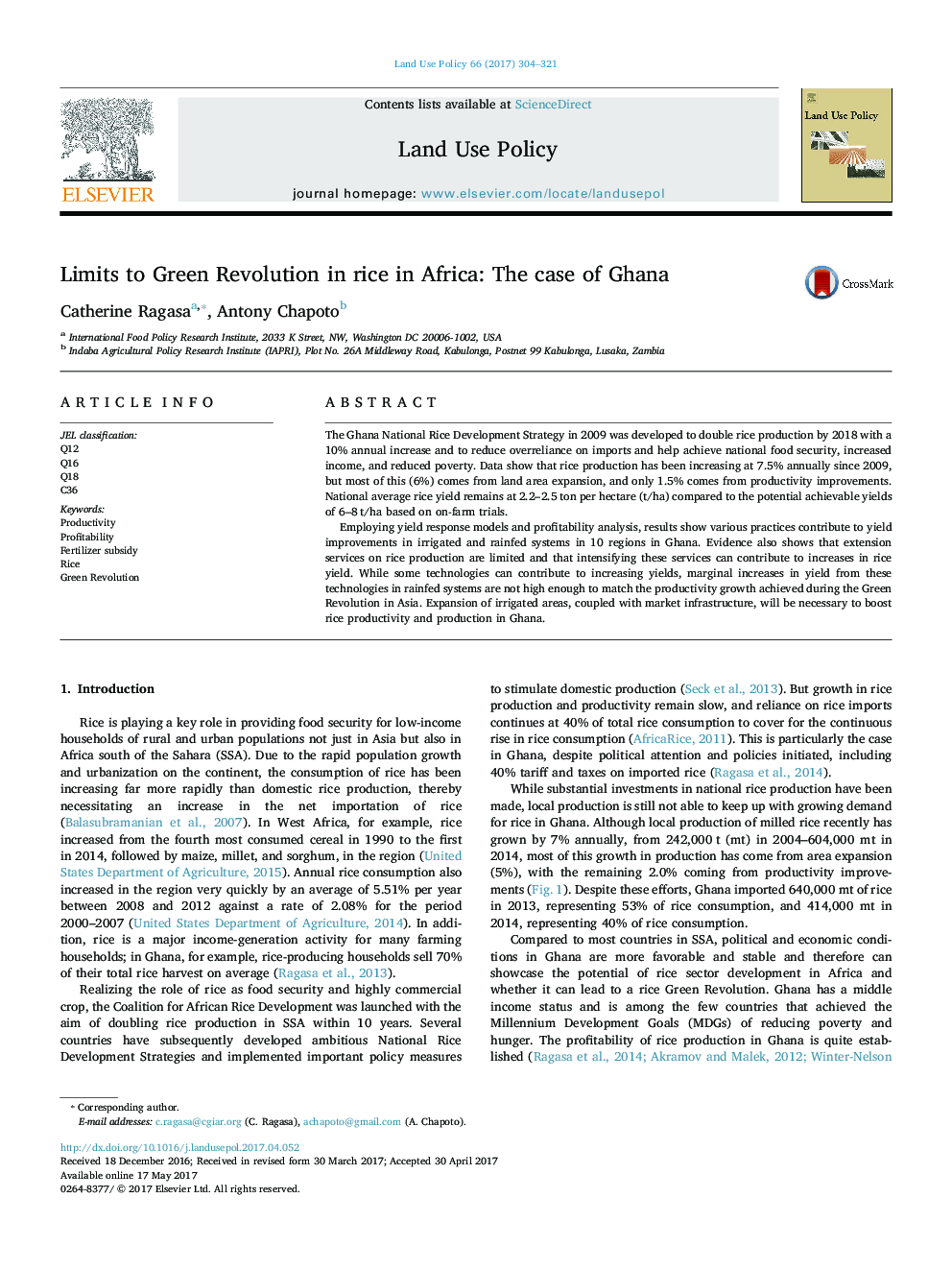| کد مقاله | کد نشریه | سال انتشار | مقاله انگلیسی | نسخه تمام متن |
|---|---|---|---|---|
| 6460942 | 1421817 | 2017 | 18 صفحه PDF | دانلود رایگان |
- Technologies like fertilizer, certified seed, transplanting, bunding, leveling, and seed priming increase rice yields.
- Intensifying extension services can help promote these yield-enhancing technologies.
- But, yield increases from these technologies are not high enough to achieve Green Revolution (GR) as in Asia.
- There is limited role of fertilizer subsidy in improving rice productivity and profitability.
- Investments in irrigation, postharvest and marketing infrastructure are critical in achieving GR in rice in Africa.
The Ghana National Rice Development Strategy in 2009 was developed to double rice production by 2018 with a 10% annual increase and to reduce overreliance on imports and help achieve national food security, increased income, and reduced poverty. Data show that rice production has been increasing at 7.5% annually since 2009, but most of this (6%) comes from land area expansion, and only 1.5% comes from productivity improvements. National average rice yield remains at 2.2-2.5Â ton per hectare (t/ha) compared to the potential achievable yields of 6-8Â t/ha based on on-farm trials.Employing yield response models and profitability analysis, results show various practices contribute to yield improvements in irrigated and rainfed systems in 10 regions in Ghana. Evidence also shows that extension services on rice production are limited and that intensifying these services can contribute to increases in rice yield. While some technologies can contribute to increasing yields, marginal increases in yield from these technologies in rainfed systems are not high enough to match the productivity growth achieved during the Green Revolution in Asia. Expansion of irrigated areas, coupled with market infrastructure, will be necessary to boost rice productivity and production in Ghana.
Journal: Land Use Policy - Volume 66, July 2017, Pages 304-321
